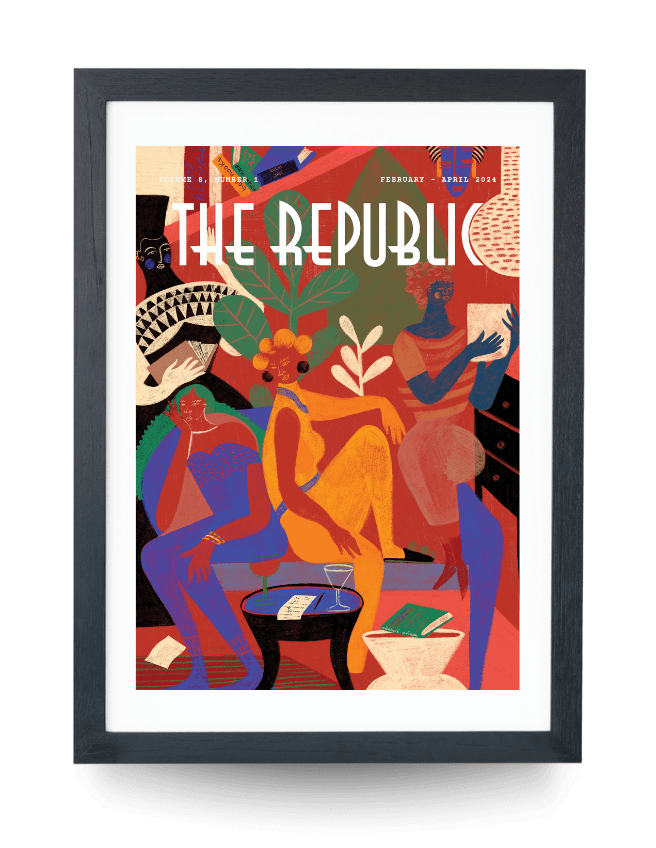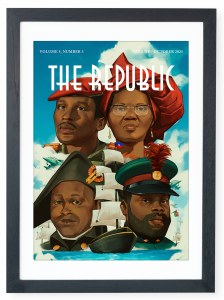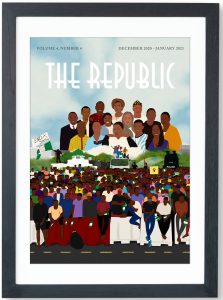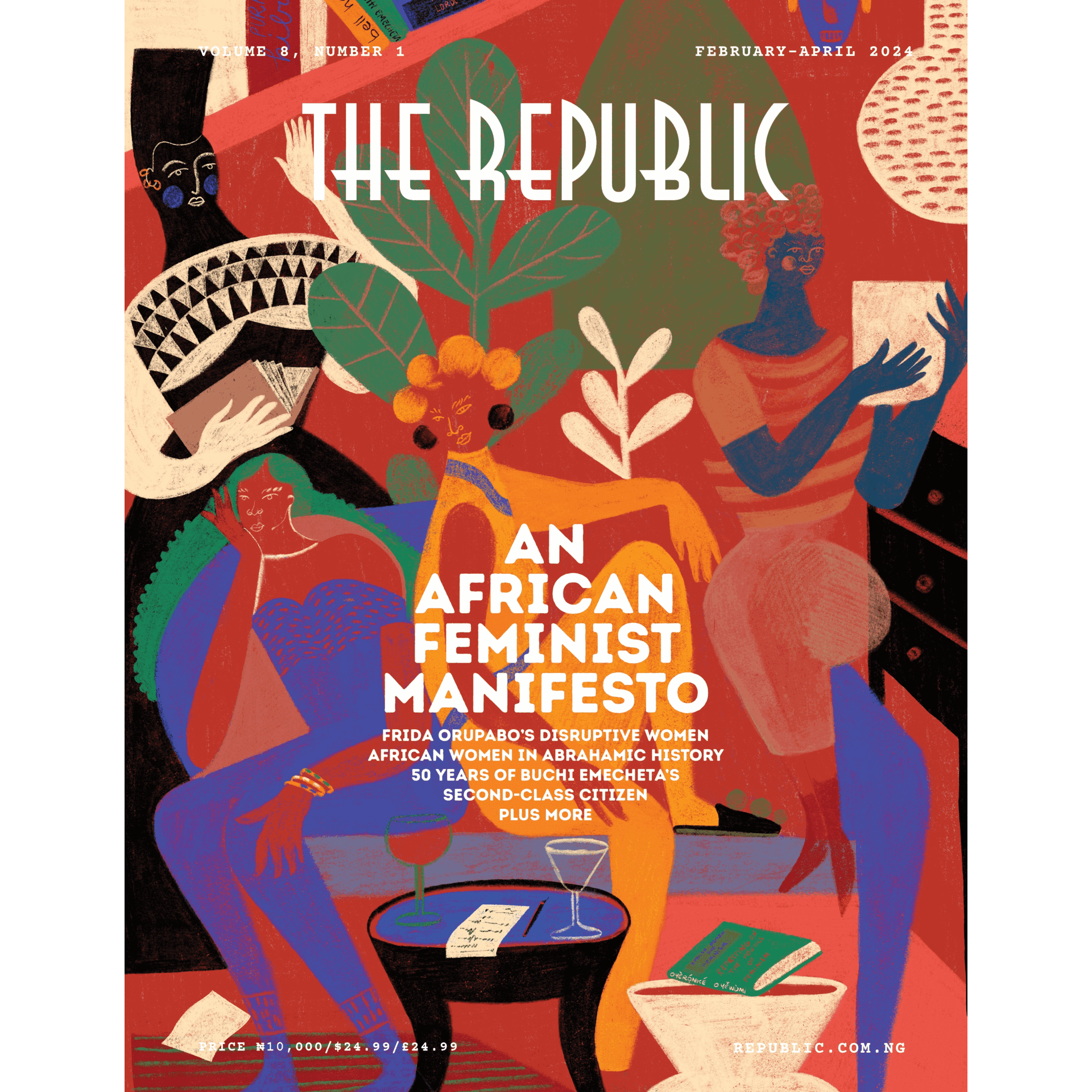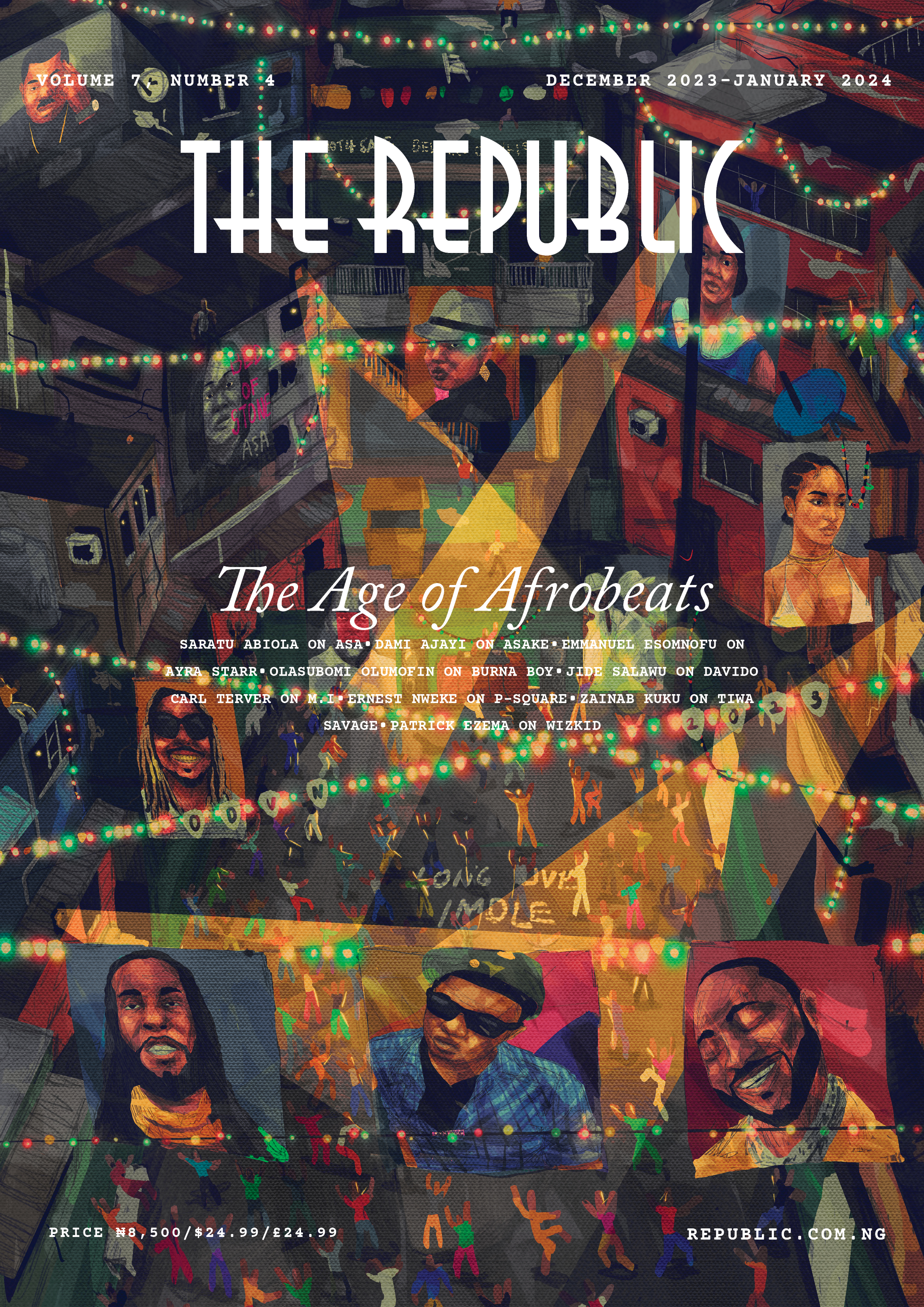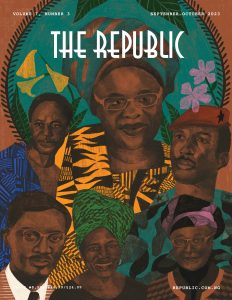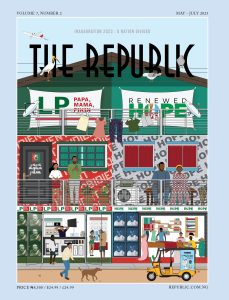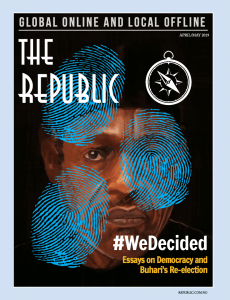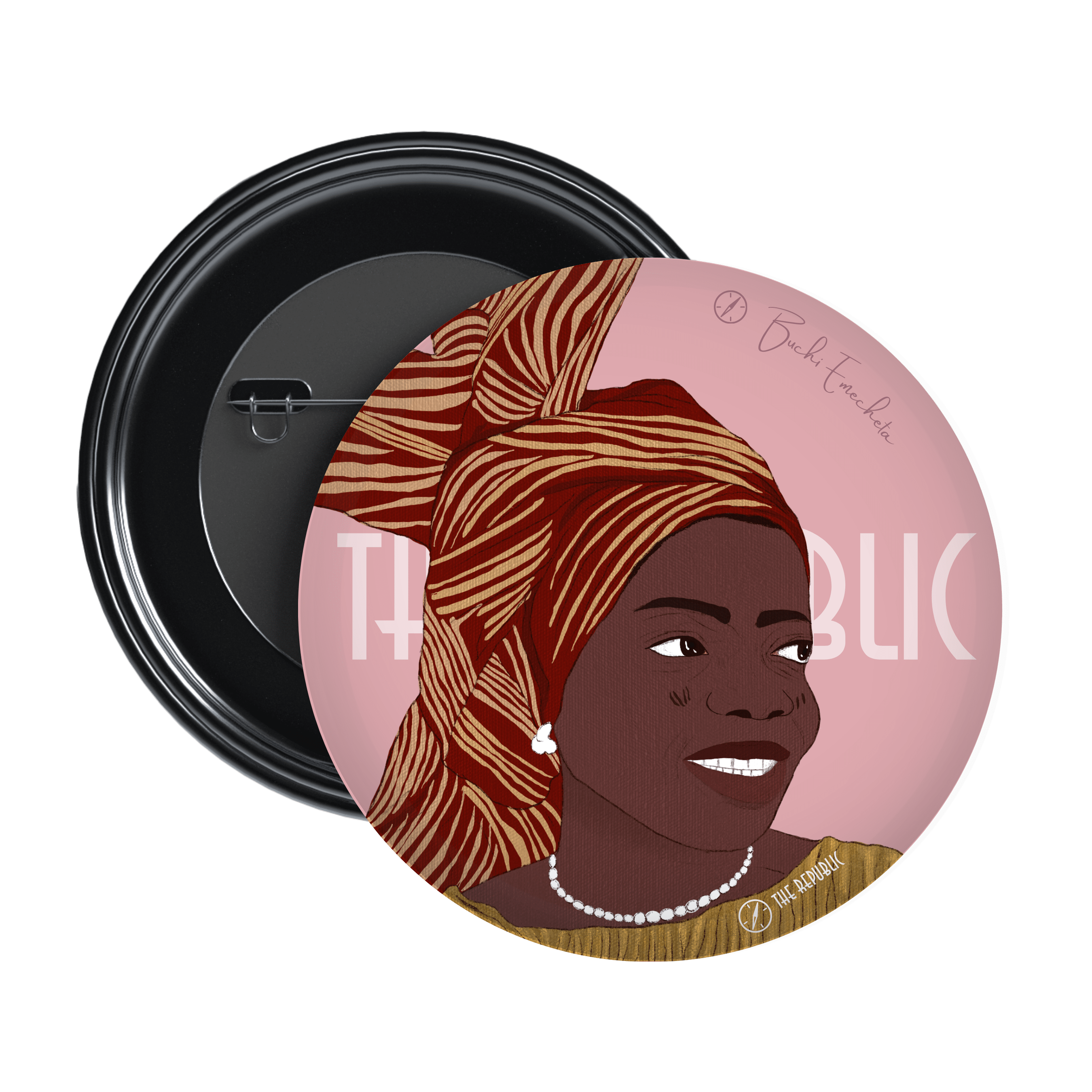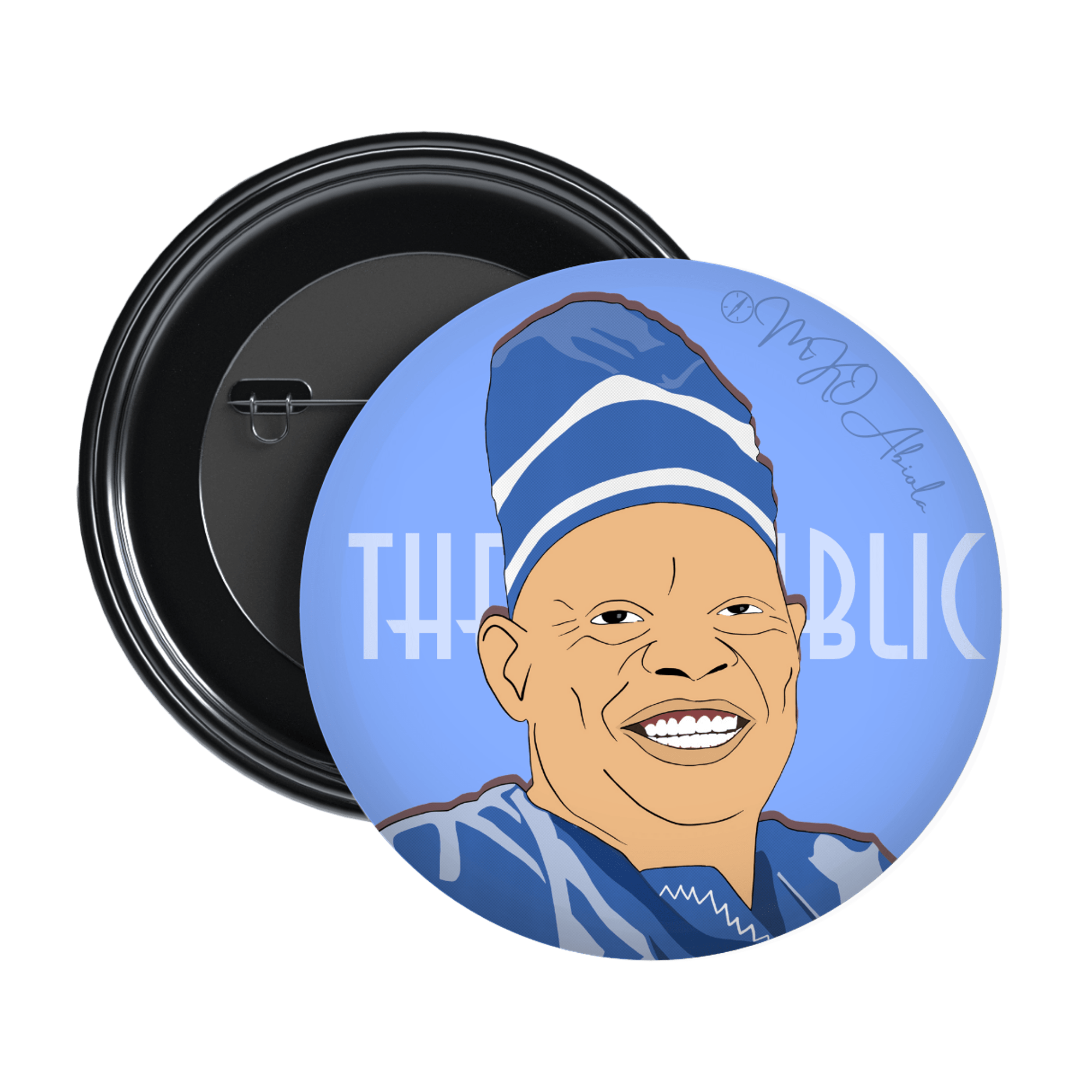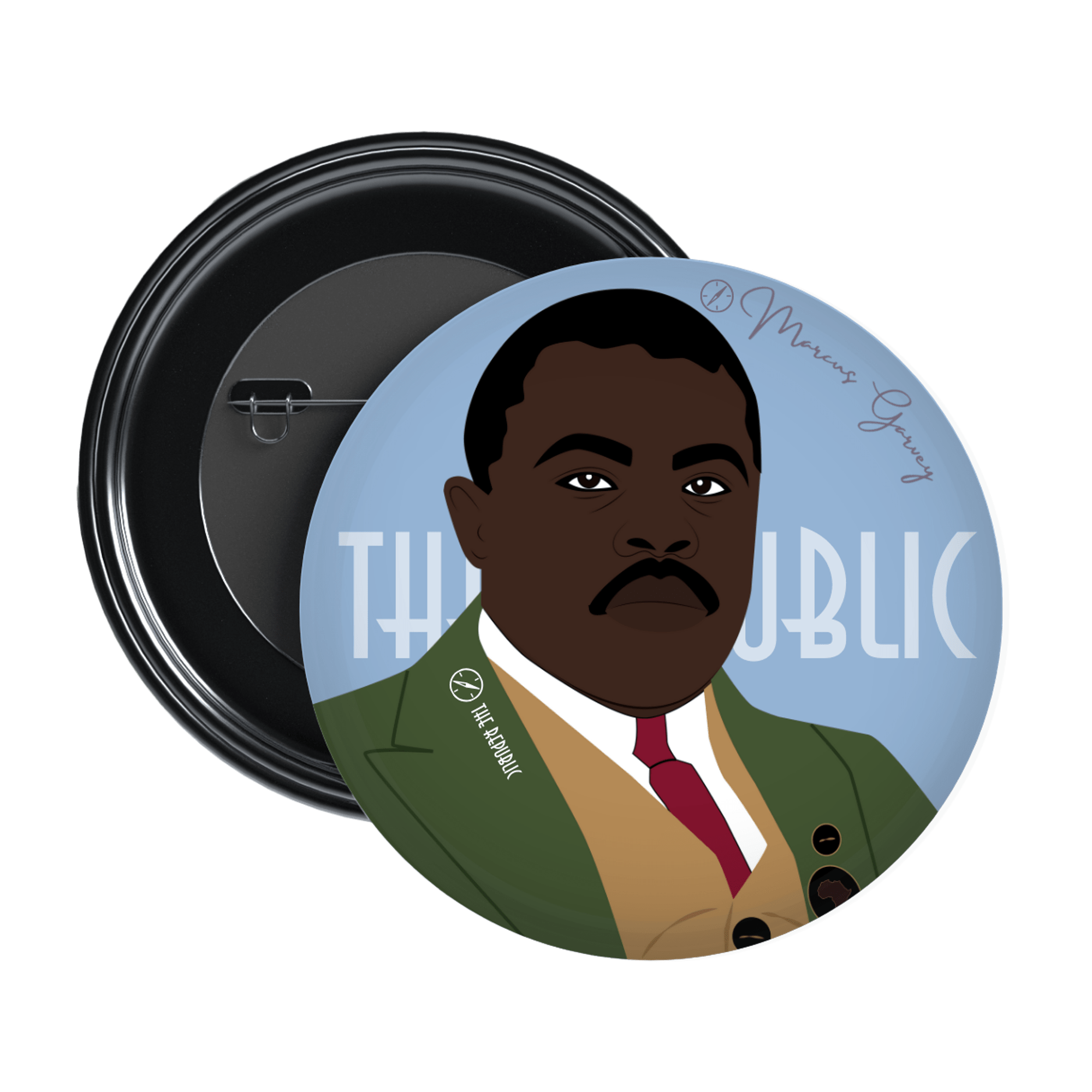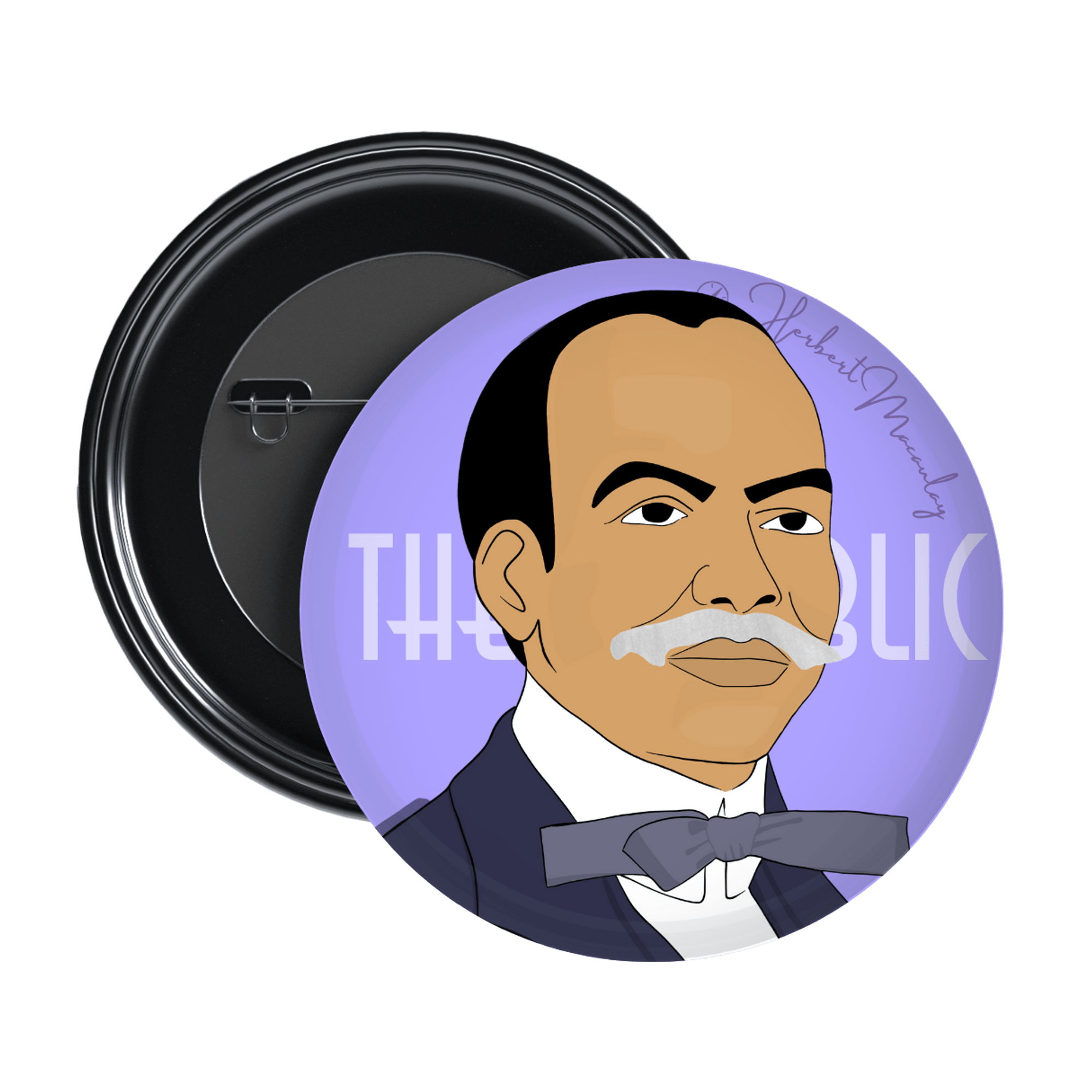THE MINISTRY OF MEMORIES
Haile Selassie I and Pan-African Diplomacy
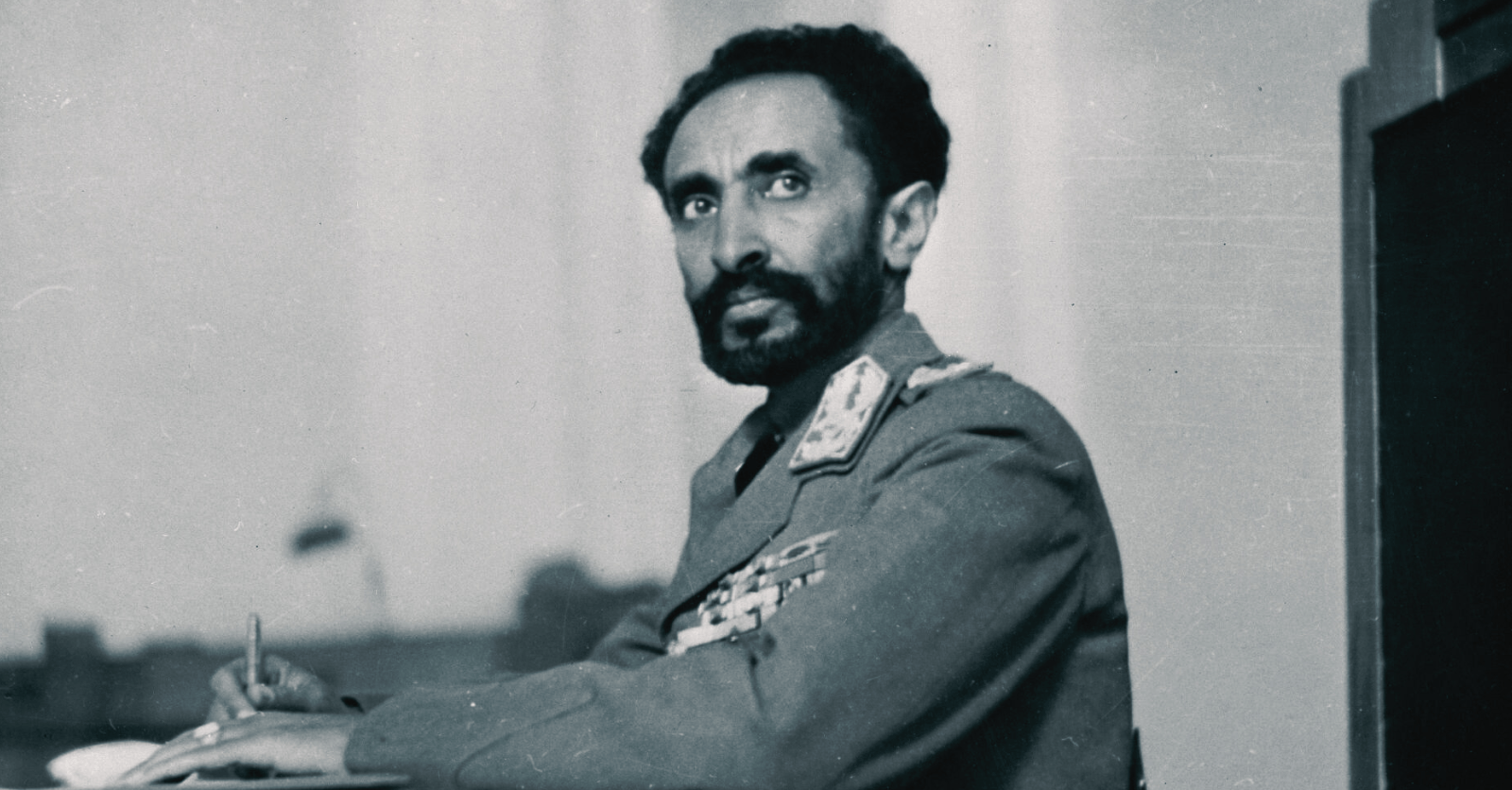
Haile Selassie I (1892-1975), the last Emperor of Ethiopia. Photo Ref: British Press Service / THE REPUBLIC.
THE MINISTRY OF MEMORIES
Haile Selassie I and Pan-African Diplomacy
Emperor Menelik I and his consort, Empress Taitu, were perhaps the first to fully embrace the idea that the imperial nation must ‘stretch out her hands’ to Africans everywhere, that a united front was imperative to face the increasing pressure of European expansion. Moreover, there was a substantial contribution of diasporans particularly during Menelik I’s reign. During the Battle of Adwa (1896) in which Ethiopia first defeated Italy’s imperialist advances, Menelik I and Empress Taitu were accompanied by the Haitian politician and diplomat, Benito Sylvain. Syvlain’s service to Ethiopia was a strategic move for pan-Africanism as an intermediary between W.E.B. Du Bois and Menelik I. Indeed, Sylvain would represent both Ethiopia and Haiti at the 1900 Pan-African Conference in England partly organized by Du Bois. Through this evolving connectivity between the continent and diaspora, the Battle of Adwa further crystallized Ethiopia in the pan-African consciousness as an eternal promise of prophetic liberation: ‘princes shall come out of Egypt; Ethiopia shall stretch out her hands unto God.’ Pan-Africanism would lie dormant but nevertheless ever-present in post-Menelik Ethiopia, leaving his successor, Emperor Haile Selassie I, to directly inherit the vision and power of a united Africa. Approaching the coronation of Haile Selassie I in 1930, Du Bois himself sat with Melaku Bayen, an important official in Selassie I’s government, to discuss the potential of a new era of global African relations within Selassie I’s regime.
INHERITING THE FUTURE
Just as Menelik I had Benito Sylvain, Selassie I had a circle of Ethiopian intelligentsia, like Bayen, who had been influenced by their exile into the West during the Italian occupation (1935-1937) and subsequently into Black liberation and pan-African ideologies. Ethiopia’s second victory over Fascist Italy took on another layer of significance as not only an emblem of African power, but also as a visceral reminder of the penetrability of European imperialism, as historian, Belete Balachew Yihun writes that it was the Ethiopian intelligentsia who witnessed the reaction of Africans everywhere who thus ‘disseminated the Bandung and Pan-African spirits among the higher strata of the Ethiopian Empire.’ This intelligentsia also included Foreign Minister Ketema Yifru, a critical figure who largely acted on behalf of Selassie I in developing diplomatic relations with the newly independent African nations.
However, it would take time before Ethiopian rule manifested a concrete response to those Black people which supported Ethiopia through its second battle with Italy in deep conviction to Pan-Africanism. Selassie I as a representative of centuries-old diplomatic policies within the empire, had an ambivalent relationship with the European powers. On one hand, he had witnessed the unreliability and indifference held by Europe towards the Italian occupation of Ethiopia, despite being ‘allied’ or at least conjoined through the League of Nations. Moreover, though Britain eventually came to the rescue of Ethiopia, only when Benito Mussolini threatened to extend his campaign to British possessions in Africa, the refusal to withdraw the British troops from Ethiopian territory after the battle was over was in effect perceived by Selassie I and his government as another occupation. On the other hand, he saw political potential in reinvigorating old diplomatic relationships with Europe and now the US which in previous centuries arguably protected Ethiopia against European colonialism.
Yihun writes that ‘if the country’s identification with African causes was based on emotions, the ones with British and American causes took the shape of economic and political dependence.’ True to the legacy of diplomacy within Ethiopian rule, Selassie I spent the first decade or so after the liberation of Ethiopia tending to political ties with the West to little avail. The support by Western powers for the annexation of critical parts of Ethiopia to create a ‘Greater Somalia’ was apparently the last straw, and Ethiopia officially reoriented its diplomatic efforts to the ‘third world’ through its participation in the Afro-Asian Bandung Conference of 1955, which also included attendance from the Gold Coast (Ghana), Liberia, Egypt, Libya, and Sudan. However, though Ethiopia enjoyed comradery at the conference with their neighbours Egypt, Sudan, and Libya, the conference had unintended adverse effects for Ethiopia.
TOWARDS AFRICAN UNITY
Though the conference was intended to promote Afro-Asian diplomacy between newly independent states, the predominance of Asian and Arab countries at the conference seemed to rather stimulate an offshoot of Pan-Arabism. This meant that the influential governments of Gamal Abdel Nasser and Muammar Gaddafi in Egypt and Libya, Ethiopia’s neighbours respectively, would increasingly turn to Pan-Arabism rather than Pan-Africanism. However, it must be said that the latter would eventually reorient towards one of the most significant Pan-African campaigns arguably since Kwame Nkrumah. The former was also a critical figure in Afro-Asiatic unity, forming the Afro-Asian People’s Solidarity Organization in 1957. His nationalist leadership in Egypt also brought admiration from both African leadership and the masses south of the Sahara. Still, this came at a cost for Ethiopia, as Nasser moved swiftly to establish nationalist control over the entire Nile valley. Meanwhile, Ethiopia’s relations with bordering Sudan after the conference also deteriorated as Selassie I’s government supported the southern, largely Christian, rebels in their struggle against the predominantly Muslim leadership in the north—a reflection on Ethiopia’s robust and at times tense relationship with the expansion of Islam. As a result, Ethiopia became both geographically and politically isolated in its quest to rebuild the nation.
Yet, Selassie I maintained that ‘international friendships can be strengthened and deepened by the personal exchange of ideas between leaders of nations.’ Just his luck, two years after the conference, Ghana, another African participant at Bandung, would gain independence under the Pan-Africanist leadership of Kwame Nkrumah, immediately followed by the successive wave of liberation of other African states. With the independence of these nations, pan-Africanism had been totally transformed from an ideological exercise into a conceivably potent political force. Amongst the wave of liberated African states, Nkrumah had emerged as a stronger alternative—not adversary—to Nasser’s geographically larger vision of a politically and perhaps topographically unified Afro-Asiatic world. With Nkrumah, then, an isolated Selassie I looking for third-world allyship had thus observed an inroad which would reinvigorate the dormant power of pan-Africanism witnessed during both Italian aggressions.
Yihun writes that, ‘Ethiopia’s leadership role in African politics was successfully launched in Accra in 1958,’ and was sustained through Selassie I’s practice of diplomacy. In April 1958, Nkrumah convened the first free African states in Accra: Liberia, Libya, Morocco, Egypt, Sudan, Tunisia and Ethiopia. As the list of free African states grew, ideas on the most auspicious implementation of a united African front began to differ. The radical bloc pushed for swift unification of the continent, complete with one currency, military, and governing body, while the more moderate bloc espoused individual nationalism with strong mechanisms of continental economic and political cooperation. These groups became known as the Casablanca and Monrovia camps, respectively. Historian Michael Nigusie Kassaye writes that ‘in Addis Ababa, there was understanding that if [the] two opposing groups failed to reach a compromise, their confrontation would degenerate into a Pan-African conflict, as a result of which the Ethiopian Empire would inevitably suffer, as its territory was close to the hostile Middle East.’ It is indeed fair to say that Selassie I felt the pressure of isolation within an increasingly pan-Arab and Arab nationalist geography. Nevertheless, Selassie I was able to maintain a neutral position, which successfully prepared Ethiopia as an equally neutral territory for the first major meeting of the camps in 1963 in Addis Ababa—the founding of the Organisation of African Unity (OAU).
shop the republic
PAN-AFRICAN DIPLOMACY
Niguisie Kassaye writes that Yifru, Selassie I’s Foreign Minister, first began diplomatic relations with then-Guinean President Sekou Toure and his representative, Diallo Telli, the first secretary-general of the impending OAU. Conversations began in June 1962, in Asmara, Ethiopia’s ‘second major city.’ Successful in garnering support for Ethiopia as a neutral ground for a Pan-African conference of the proposed magnitude, Selassie I then ‘dispatched his Minister of Foreign Affairs with letters to all leaders of independent African Nations,’ to host a continental African summit in Addis Ababa. Ironically enough, Nasser was the first to respond to the call, prompting Yifru to undergo a pilgrimage of sorts, in which he visited and acquired agreement with Morocco, ‘Algeria, Tunisia, [and] countries of Western and Central Africa,’ ultimately leading to the confirmation of 32 heads of state to be present at the historic Pan-African conference.
Selassie I’s ability to lead the two camps into at least tentative cooperation through their appearance at the conference solidified his contribution to the pan-African imperative. For the next decade, a golden age of pan-Africanism, Selassie I would transform his diplomatic proclivities into efficient peacemaking strategies between fledging African states whose warring undermined the pan-African agenda. Yihun writes that he would see through ‘the successful mediation of the conflicts between Algeria and Morocco (1963), Ghana and Guinea (1966), Nigeria and Ivory Coast, Nigeria and the four states that supported the Biafra Republic (1967), the civil war of the Sudan (1972), and Uganda and Tanzania (1973).’
It is perhaps the diplomacy that Selassie I fostered between African states which influenced one of the chief successes of the OAU. According to historians, Victor Osaro Edo and Michael Abiodun Olanrewaju, this chief success was the organization’s ability to resolve intra-continental conflicts ‘in an African spirit without any foreign intervention.’ They write that they were able to resolve said conflicts through its ‘Conciliation, Mediation and Arbitration Commission,’ which was ‘highly influenced by the emperor,’ ultimately receiving ‘commendation from the United Nations.’ As such, it was only through this high level of intra-continental diplomacy that there was now an organized front which had amassed enough power to acquire serious consideration on the international stage, particularly within the United Nations.
This was arguably a direct result of the emperor’s strategic political manoeuvring implanted at the very genesis of the OAU. During his historic speech in front of 32 African nations on 25 May 1963, Selassie I asserted that ‘quarrels’ between African states ‘must be confined to this continent and quarantined from the contamination of non-African interference,’ and therefore ‘procedures must be established for the peaceful settlement of disputes, in order that the threat or use of force may no longer endanger the peace of our continent.’
This verbal proclamation was part and parcel of the vision he outlined for an economically and politically cooperative Africa. He asserted that the purpose of the conference was ‘to lay the basis for African unity,’ and to ‘agree upon the basic instrument which will constitute the foundation for the future growth in peace and harmony and oneness of this continent.’ He went on to highlight several important elements necessary to achieve this oneness. This included ‘specialised [bodies] to facilitate and coordinate continent-wide programmes’ that oversaw ‘economic cooperation between African nations’ such as an ‘African Development Bank,’ ‘travel between African nations and telegraphic and telephonic communications,’ and an ‘African defence system.’ He lastly, and perhaps most significantly emphasized education as in need of ‘a massive effort…in the educational and cultural field which will not only raise the level of literacy and provide the cadres of skilled and trained technicians requisite to our growth and development but, as well, acquaint us one with another.’ He urged the fostering of a pan-African education through the establishment of an African University,
sponsored by all African States, where future leaders of Africa will be trained in an atmosphere of continental brotherhood. In this African institution, the supra-national aspects of African life would be emphasised and study would be directed toward the ultimate goal of complete African unity.
Indeed, education was so significant to Selassie I that it was the only initiative of which he volunteered to take leadership during that speech, asserting that ‘Ethiopia stands prepared here and now to decide on the site of the University and to fix the financial contributions to be made to it.’ In fact, Selassie I had been making several gains in education in his own country for decades prior.
shop the republic
PAN-AFRICAN EDUCATION
At the inauguration of Haile Selassie I University in 1949, the emperor asserted that ‘the salvation of [Ethiopia], as We have repeatedly stated to you, lies primarily in education.’ Yet, Girma Amare shares that even prior to Selassie I’s ascension to the throne in 1930, he sustained a firm but moderate approach towards modernization in which education took centre stage. When Selassie I was just Ras—a title equivalent to a provincial governor—Tafari Makonnen, he campaigned on and ‘maintained the view that…modernization should be blended with tradition to bring about an evolutionary development along a path appropriate to Ethiopia’s needs and historical experiences.’ In that sense, the medium which would stimulate technological advancement within the framework of ‘traditional’ principles and the historical conditions of Ethiopia would indeed be education. Once on the throne alongside his wife Empress Menen, writes Selassie I began the ‘controlled and supervised development of education,’ in which he ‘placed virtually all responsibilities for the control and financing of education in the hands of the state.’ They wasted little time implementing educational reforms, including the establishment of the first girls’ school in Ethiopia in 1931, named after the Empress.
After the Italian occupation, the Emperor and the Empress began rebuilding the nation again focusing on education. At this point, Eshete Tibebe suggests, the Emperor evolved past education for the advancement of Ethiopia only and began observing more broadly that:
Education in general, and higher education, must aim to provide, beyond the physical, food for the intellect and soul. He held the conviction that education which ignores man’s intrinsic nature and neglects his intellect and reasoning power cannot be considered true education.
No doubt a product of Ethiopia’s alienation and isolation from both Western and so-called third-world states in combination with the wave of revolution occurring on every continent, this line of thinking would point to his religious yet globalist perspective in which all peoples are responsible for discovering their ‘intrinsic nature,’ and fulfilling their purpose within a divinely designed and ordered world. This is perhaps not a novel concept, especially in the Black experience.
As early as the 9th century, African intellectuals like the East African scholar ’Uthman ’Amr Ibn Bahr al-Jahiz, declared that Africans, like all groups of people, have a specific duty and talent(s) which they present as their necessary contribution to the world. In more recent eras, this conviction was once again revisited by Ethiopianism in the Atlantic world which centred Ethiopia as the vanguard of the biblical and prophetic rise of African peoples. In the 19th century, Liberian educator Edward W. Blyden’s theory of the African Personality also suggested that there was quintessential Africanness that must be developed towards the evolution of a global Africa and ultimately to the predetermined order of the world, influencing further notable movements such as the 1920s Harlem Renaissance and 1930s the Négritude movement. The idea of a quintessential Africanness has gone through centuries of iterations before it became the key refrain of critical Black liberation figures ranging from Marcus Garvey to Kwame Ture.
Yet Selassie I in the mid-20th century was a unique voice in invoking this quintessential Africanness as dialectically linked to the development of humanity as a whole. For the fledgling African states who were rightfully focused on intra-development, and for the Black liberation movements in the diaspora still clamouring for citizenship in conjunction with a unified economic and political power, Selassie I offered a broader horizon. Approaching the founding of the OAU, Selassie I’s point of view of education as an amplifier of one’s true nature would continue to evolve within a Pan-Africanist framework. In 1950, he established Haile Selassie I University. Though the university initially became a tool of U.S.-Ethiopian relations through U.S. financing, by the time of the Bandung conference, Tibebe writes, Selassie I was ‘bringing students from various African countries to pursue their education in the national university through grants received from the Ethiopian government under his name.’ By 1958, at least 200 African students were part of this scholarship programme, and ‘interestingly enough,’ continues Tibebe, ‘most of the African students became prominent leaders and played crucial roles in the independence of their countries.’ The university would evolve into a critical site converged on by influential pan-Africanist leaders including Trinidadian prime minister Eric Williams, Egyptologist William Leo Hansberry, and the critical Black nationalist leader El-Hajj Malik El-Shabazz (Malcolm X).
In the 1961 convocation of Haile Selassie I University, the Emperor asserted that the university as a concept, ‘stands today as the most promising hope for constructive solutions to…problems which prevent the peaceful cooperation of nations, problems which threaten the world and humanity with death and disaster.’ From universities across the globe must come those who will develop ‘ideas, knowledge, experience, technical skills, and the deep humane understanding vital to fruitful relations among nations.’ Finally, Selassie I asserted that the marker of genuine civilisation is ‘the victory of persuasion over force,’ for without this, ‘world order, for which We have so long strived, cannot be established.’ For the Emperor, it is here that the benefit of privileging of education is both directly and indirectly linked to the development of intra- and inter-diplomacy policies which are the foundation of a new world order free from force and exploitation. Selassie I ensured the practical application of this philosophy within a pan-African framework.
Firku Gebredikan writes that upon the founding of the OAU, the ‘most ambitious of all the global- Africa ventures,’ of the Emperor was the Haile Selassie I Prize Trust established in 1963. The prize offered ‘annual awards of 60,000 Ethiopian birr, or over 25,000 US dollars, to international scholars who made outstanding contributions in various areas, including Ethiopian studies and African studies.’ The preamble of the Prize trust stated that it sought ‘strengthening of the spiritual and cultural bonds between the Ethiopian people and the peoples of the African continent and the whole world.’ That Selassie I did not explicitly reserve the Prize for Africans, on the continent or elsewhere, points to his philosophy that Pan-Africanism is not an end in itself, but a means to achieve a new humanity in which all peoples are free from economic, political and cultural exploitation.
shop the republic
PAN-AFRICAN WORLD CITIZENSHIP
It was only five months later after the founding of the OAU Selassie I would address the UN General Assembly under the same philosophy, undoubtedly underpinned by his gift for diplomacy. Delivering perhaps his most famous speech which would directly inspire reggae artist Bob Marley’s hit record, ‘War’ (1976), Selassie I asserted that the founding of the OAU in the past few months ‘demonstrated to the world that when wills and determination exist, nations and peoples of diverse origins can and will work together in unity in achieving common goals for the guarantee of that equality and brotherhood that we desire.’
Indeed, Selassie I’s speech contended that a victory for pan-Africanism was a victory for humanity. Marley’s 1976 hit mirrored Selassie I’s words that ‘the dream of lasting peace and world citizenship and the rule of international morality will remain but a fleeting illusion to be pursued but never attained,’ until
the philosophy that sustains a superior and inferior race is finally and permanently discredited and abandoned; until there are no first and second class citizens of any nation; until the colour of a man’s skin is no more important than the colour of his eyes; until basic human rights are equally guaranteed to all regardless of race.
To Selassie I, this necessitated that ‘all Africans stand up and speak like free human beings,’ and until that day, ‘the African continent will not know peace,’ which meant the vision for a new world would be unable to be realized. This, however, did not mean that the world was dependent on Africa’s survival alone, instead, Selassie I asserted, the vision of a new era of humanity ‘required the united effort’ and full participation of each appendage of the human body politic. As such, Selassie I reflected the inextinguishable aura of the newly inaugurated OAU when he affirmed at the UN, ‘Africans will fight, if required, and we know that we will win, since we trust in the victory of good over evil.’
To Selassie I, the ultimate goal was the evolution of all humanity. Yet Africans could only effectively participate in this reinvention of humanity through a united effort–Pan-Africanism. It is also true that the African has indeed also become a world citizen, and has been a world citizen centuries prior to the eve of European expansion. By freewill and by force, it has been documented, Africans have dispersed on other continents to fill the ranks of elite armies and governments, where they raised and destroyed empires; have delivered and nurtured sons of high, divine, and low rank; have both produced and filled the ciphers of ancient religious texts; inspired major developments in culture; catalysed history’s largest economies; and galvanized far and wide revolutionary changes for oppressed people everywhere. Everywhere one may look, there is an African community, centuries or decades old, with a story to tell of their contributions to societies across the globe. Indeed, I emphasize, the African has always been a world citizen.
Selassie I also understood quite viscerally the political and economic consequences of an isolationist position. Indeed Selassie I maintained that while
Each nation will inevitably pursue that course which appears best suited to its own unique characteristics, no nation can pursue its course in isolation and no nation can develop and prosper with its back turned to the rest of the world in terms of trade, techniques, resources and ideas. Each of us depends upon the other, can learn from the other and in pursuing its own destiny will go further and succeed more quickly with others.
This is perhaps a point of view that Selassie I was most fruitful in contributing to pan-Africanism. Amongst the swelling calls in the diaspora and on the continent for Black consciousness, Black liberation, and Black nationalism, the danger was falling into the trap of Black isolationism. I would indeed argue that those movements which fall on the verge of Black isolationism which see any external peoples as potential (re)invaders, are dialectically rooted in the imperialist, racist propaganda which contended that Africa lived untouched in its backward darkness, and was brought into being by Europe, when in fact as we have said, history demonstrates that the African was and is a world citizen, a part of global history, and at any rate, is directly responsible for the birth of human civilization.
Both the geography and the centuries-old legacy of Ethiopia’s diplomatic and at times ambivalent relationship with European, Arab, and Asian worlds perhaps put Selassie I in the best position to understand that the Black person on the continent and elsewhere, must contend with the presence of other peoples as cultural, political and economic forces—we’ve already been doing it for millennia. The rebuilding of each society in which Black communities exist will require the fostering of intra- and inter-diplomatic networks which would sustain macro and micro-economies, deter aggression, and nurture robust cultural evolution. This has become even truer as we move toward a world with unprecedented connectivity.
Yet, this could only or at least in large part be developed through education which combats ignorance and fosters historical knowledge. To Selassie I, knowledge of historical conditions in turn contributes to technological innovations that amplify sustainable, pre-existing skills, markets, and resources divinely ordered through historical and environmental specificities. In that sense, it is not enough to know the history of one’s own state, but of those with which they wish to develop diplomatic relationships. This knowledge, in theory, should lead to an unprecedented level of peaceful cooperation among all peoples because they are fully aware of their responsibility and fated contribution to human society.
This philosophy, broadly speaking, should in effect be a general template malleable enough for micro and macro development; and in applying this philosophy, as Black communities are able to prosper through their networks, the entire world should enter into a new phase of interconnectedness–without the exploitation. Therefore, pan-Africanism, or a united front of relations between Africans across the globe, is on one hand mutually dependent on the decolonization of all peoples, and on the other hand not an end in itself, but a means to an end—a new world order of lasting peace, world citizenship and the rule of international morality⎈




